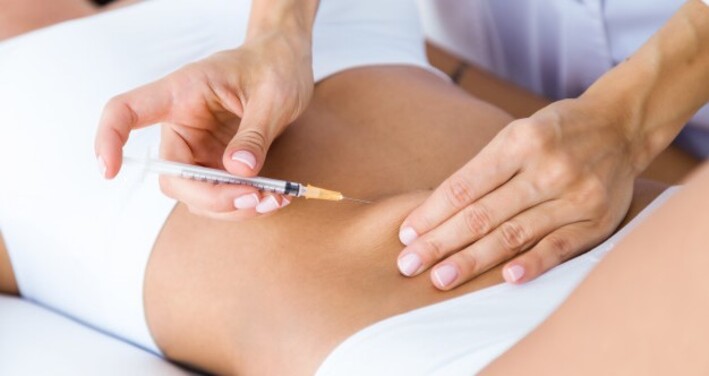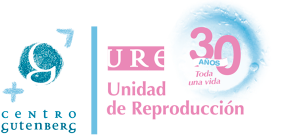Ovarian stimulation in assisted reproduction

We answer your most frequently asked questions!
It is completely normal to feel confused about certain concepts related to assisted reproduction treatment. One of these is the ovarian stimulation which is a process that tends to make our patients worry and have lots of questions.
To help you tackle this procedure head-on we have prepared this article. Throughout the article we want to respond to all the questions you may have before starting your treatment. If after reading this article you still have questions … contact us!
What is the ovarian stimulation?
The female body normally develops and matures one egg per month, sometimes two. In the majority of cases, undergoing assisted reproduction treatment with just one egg is not very efficient, especially if we’re going to carry out in vitro fertilisation.
For this reason a controlled stimulation of the ovaries is carried out. To do so we utilise hormones that make it possible for “super ovulation” to occur. In other words, more than just one or two eggs will develop.
This process allows us to improve the likelihood of success with assisted reproduction treatment as the odds of obtaining good quality, viable embryos to be transferred to the female’s uterus will be higher.
What is the process of ovarian stimulation like?
The ovarian stimulation generally begins on the second or third day of the patient’s period by administering hormone medications for an average of ten days.
The medication is usually administered via subcutaneous injections (under the skin). The dose will vary depending on the characteristics of each individual patient. The injections are generally administered in the abdomen and you can either self-administer them or ask your partner to administer them for you.
During this time your doctor will monitor you with the help of ultrasound scans and hormone tests to ensure correct development of the follicles. Once the majority of the follicles have grown to more than 18 millimetres in average diameter, the hormone hCG (Ovitrelle), will be administered to encourage final maturation of the follicles. The egg retrieval will be arranged to take place 36 hours after administration of hCG in order to collect the eggs that have been developing in the ovaries.
What medication is used for the ovarian stimulation?
In general, the hormones utilised to stimulate the ovaries are based on the natural hormones FSH and LH, or a combination of the two.
These medications may be sold under different brand names, but all are equally effective. The use of one over another will depend on each patient, her diagnosis and the experience of the fertility specialist.
Is the ovarian stimulation the same for all patients?
No. The type of medication, administration route and recommended dosage will depend on each female’s particular diagnosis and the treatment she is going to undergo (artificial insemination or in vitro fertilisation).
How many eggs does an ovarian stimulation produce?
What you need to keep in mind is that the more eggs we retrieve, the higher the likelihood of success. Having said this, the ideal number would be somewhere between ten and fifteen eggs. Having less than ten eggs reduces the likelihood of pregnancy, while obtaining more than fifteen eggs increases the risk of complications such as ovarian hyper-stimulation syndrome.
Should the medication always be administered at the same time?
The recommendation is to administer the medication at approximately the same time each day, ideally in the evening or at night so that any treatment adjustments can be put into effect the same day if you have an ultrasound scan and the doctor makes changes to your protocol.
Some medications, such as Orgalutran or Cetrotide, need to be strictly administered every 24 hours.
What happens if I forget to take my medications one day?
Ideally this won’t happen, as the follicles that are developing are very sensitive to changes in hormone levels, and forgetting to take your medication could be detrimental to their correct development. Generally speaking, the impact of missing a medication will depend on what type of medication was forgotten and during which point in the patient’s treatment.
Can I have intercourse during the process of ovarian stimulation?
The recommendation is to avoid sexual intercourse, especially towards the end of the ovarian stimulation process.
Could the ovarian stimulation carried out during in vitro fertilisation treatment cause menopause to start sooner?
No. Ovarian stimulation does not speed up the arrival of menopause. During an ovarian stimulation treatment we are stimulating and recovering the follicles that are available during this particular cycle. These same follicles would have simply been lost in a natural cycle.
Are there any risks with the ovarian stimulation?
Like with any medical procedure the ovarian stimulation does have risks, but their incidence is very low.
The most serious risk is ovarian hyper-stimulation syndrome which we discussed earlier. This condition can become serious, though nowadays there are measures we are able to take to prevent this complication almost 100% of the time, or at least reduce its severity.
We hope we’ve been able to clarify all your questions about the ovarian stimulation in assisted reproduction treatment. You know that at URE Centro Gutenberg we are here for you, so if you still have questions you only need to request an appointment with us and we’ll be happy to answer them

